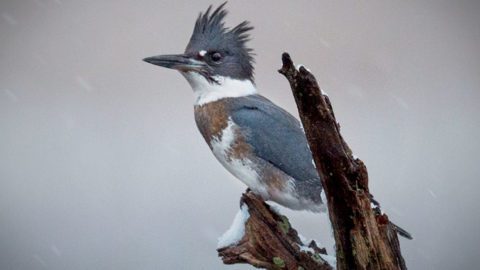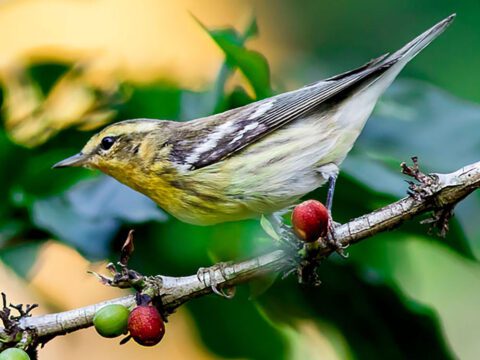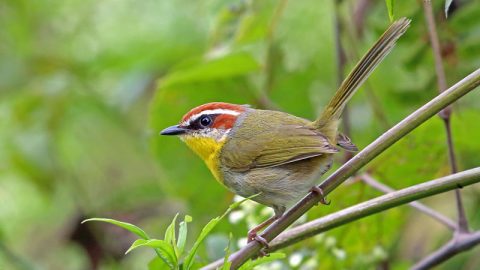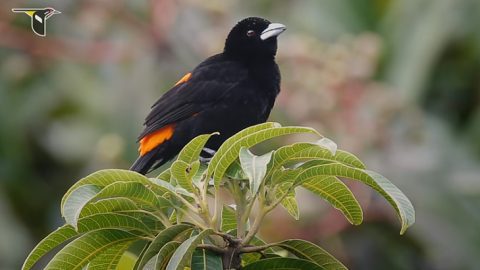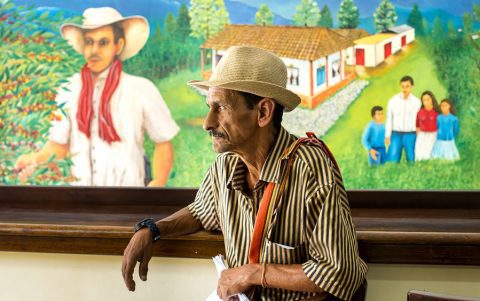Analysis: A New Vision for Restoring Warbler Wintering Habitat
By Eric Ponçon and Juan-Diego Román
Yellow Warbler in Costa Rica. Photo by Fernando Burgalin Sequeria/Macaulay Library. December 21, 2020From the Winter 2021 issue of Living Bird magazine. Subscribe now.
Recently the United Nations released a progress report on the goals set by almost 200 countries in the Convention on Biological Diversity—and the news was not good. In a nutshell, global biodiversity loss is a continuing catastrophe, and deforestation for agriculture is one of the biggest culprits.
We write this essay as two executives for multinational corporations in the agricultural commodities sector. You might think we’re part of the problem. But we have a different vision for agriculture, which sees farming as part of a cure, instead of a cause, for biodiversity loss.
Our regenerative agriculture projects on coffee farms in some of the world’s most biodiverse areas are providing proof that farming can restore biodiversity. And some of the most compelling early results are coming in the form of warblers and parrots—birds returning to reforested coffee farms as symbols of an ecosystem that’s healthy for wildlife and people alike.
Our companies are motivated to act in this space, because the future of coffee is intertwined with healthy tropical ecosystems. Climate change could reduce the global area suitable for growing coffee by half by the year 2050. In response, many coffee farms are predicted to move upslope into newly suitable microclimates higher up in mountain tropical forests, which are also some of the world’s last strongholds for intact tropical forests and biodiversity. Another forecast predicts coffee as an agricultural product could be extinct in Nicaragua by 2050, which would be devastating in a country where coffee is the most important export crop.
More About Bird Friendly Coffee
Nicaragua presents the even steeper challenges that lie within the details of stopping biodiversity loss in the tropics—namely, that the places with the biggest biodiversity conservation potential also happen to be rural farming areas where people are vulnerable to climate change disasters, political difficulties, social unrest, and poverty.
And so solutions that improve the prospects for biodiversity must improve the prospects for people as well. In our business, coffee production must be transformed into a biodiversity-plus commodity that creates prosperity for local farmers and rural communities.
The ideas we write about are not new. Ten years ago, an article in the journal Proceedings of the National Academy of Sciences by University of Michigan biologists Ivette Perfecto and John Vandermeer challenged the “assumption that agriculture is the enemy of conservation.”
“It is the kind of agriculture, not the simple fact of its existence, that matters,” they wrote (emphasis added is ours).
On the one hand, they described a model of industrial agriculture that relies on low-cost labor to produce mass food quantities at a high profit for the parent company. There is collateral damage in this model, negative externalities in business-speak—costs to local environments and communities caused by the producer, but not compensated for. Deforestation—and the resulting flooding, mud slides, and pollution—are negative externalities. So are the climate impacts of removing forests as carbon sinks.
Over the past 20 years, there has been a lot of good work to mitigate these farming externalities. Certifications (such as the Rainforest Alliance’s tree frog sticker on bananas or coffee) raised the visibility of sustainable food production for business and consumers. But the costs of planting shade-grown tree cover can make sustainability certification unattainable for most small coffee farms. And small farms make up the bulk of coffee production in the countries where we do business; in Colombia, 95% of coffee is produced by smallholder farms.
As an alternative model, pilot regenerative agriculture projects have been launched to build on the success of past efforts. These projects create a framework for transitioning farms in deforested areas toward restoring the functional components of their ecosystems, with the costs covered by investors instead of farmers.
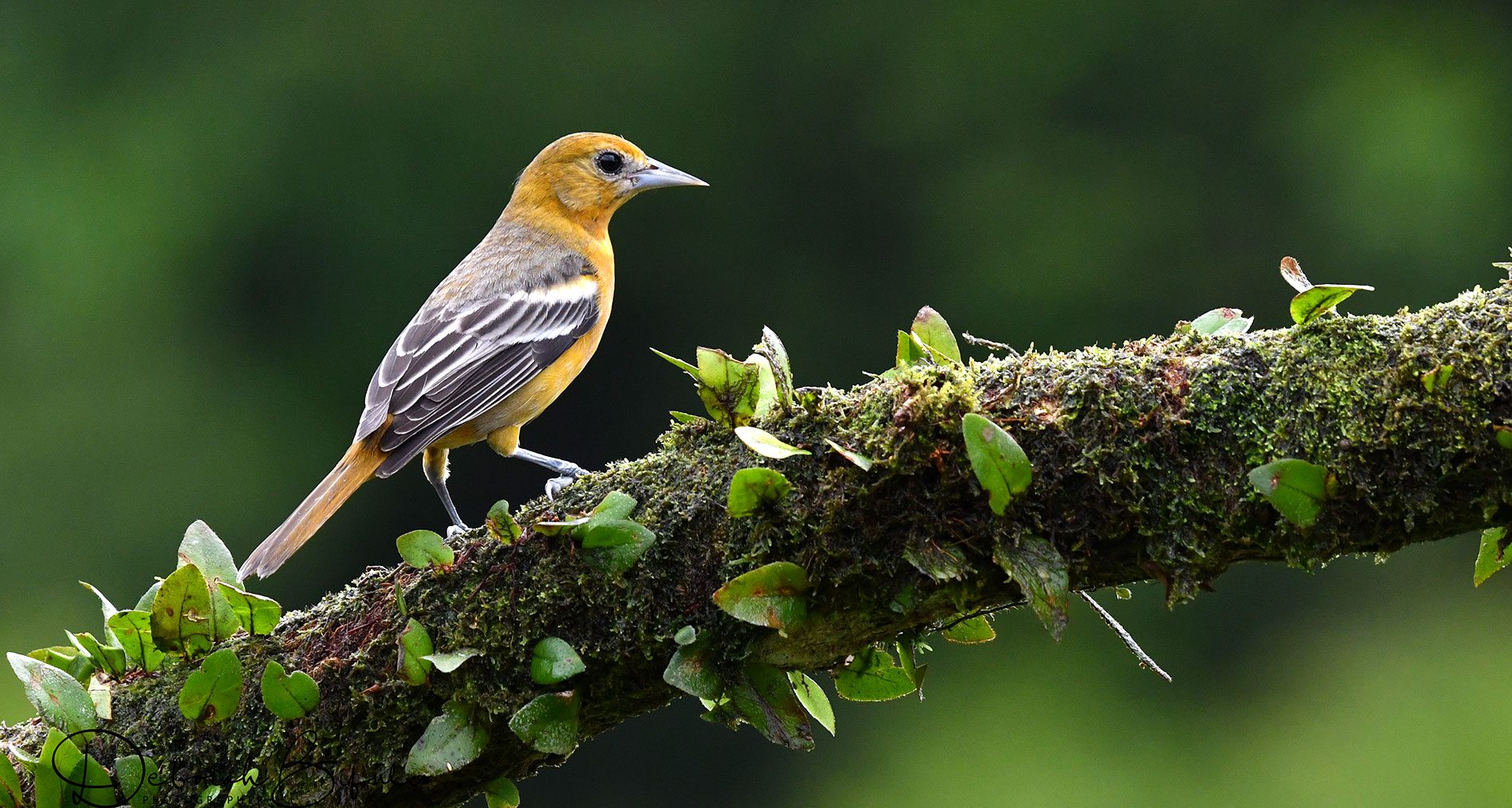
The La Cumplida coffee farm in Nicaragua is the site of a pilot project that shows this regenerative agriculture model in action—a blueprint for blended conservation-finance investment that can scale up regenerative agriculture. As with much of Central America’s highlands, the Matagalpa region of northern Nicaragua was deforested in the late 19th century for coffee and cattle farming. Then American companies moved in to develop gold mines. But the La Cumplida coffee farm went a different way in the late 1990s when it was acquired by the late Clément Ponçon, a pioneering French agronomist. Ponçon developed La Cumplida as a model of agroforestry, that is, farming in a restored forest setting.
In 2015, as the Paris Accord was being negotiated, the Moringa Fund (a European private equity firm that invests in sustainable agroforestry) saw an opportunity to contribute to the global agreement’s goals for conserving forests as reservoirs for greenhouse gases. Moringa scaled up La Cumplida by investing about $4,000 per hectare to restore shade-grown coffee on nearly 2,500 hectares of neighboring coffee farms that had been devastated by drought and coffee-rust disease. The program introduced new shade-coffee varieties that can thrive in a 21st-century climate and trained farm workers in methods that reduce the use of synthetic fertilizers and pesticides to shrink the farm’s environmental footprint. Moringa also developed a complementary income stream for the coffee farms from Rainforest Alliance–certified timber sales, as some of the shade trees (such as mahogany and walnut) can be sustainably harvested and marketed as FSC-certified wood. Some of the timber was also used to build homes and schools in the community, thereby enhancing the socioeconomic security of the farm workers and their families.
With commercial support for purchasing the coffee from Ecom and several coffee companies (including Nespresso, Costa Coffee, Nordquist, and Peerless Coffee), the La Cumplida project has transformed this region in the mountains of Matagalpa. As the investors, Moringa and its partners receive the rights to the proceeds of the coffee crops for a period of five years—after that, participating farmers receive the full benefits of the restoration, with the farms’ best coffee-growing years ahead.
The story of La Cumplida demonstrates a regenerative-agriculture strategy that makes long-term investments, balances trade-offs, and accounts for externalities—lowering the costs of fertilizer and pesticide inputs, broadening the bottom line to include social impacts and environmental footprint, and compensating for lower yields (shade coffee produces 20% less than sun-grown coffee) by delivering higher-quality coffee that gets a higher market price.
That last part is where the consumer comes in—the coffee drinker who’s willing to pay a bit more for a cup of coffee. Why pay more? Maybe because the coffee tastes better, or because they feel good about drinking coffee that supports reforestation instead of deforestation. Regardless, the consumer needs to know why this coffee is a better choice. That’s a common theme throughout the regenerative agriculture model: From investors who bankroll a farm’s transition costs to the farmers who take a risk by adopting a new model for growing coffee, to the wholesale purchasers, retailers, and end-consumers—everybody in the supply chain needs transparency about why this is a better way to produce coffee.
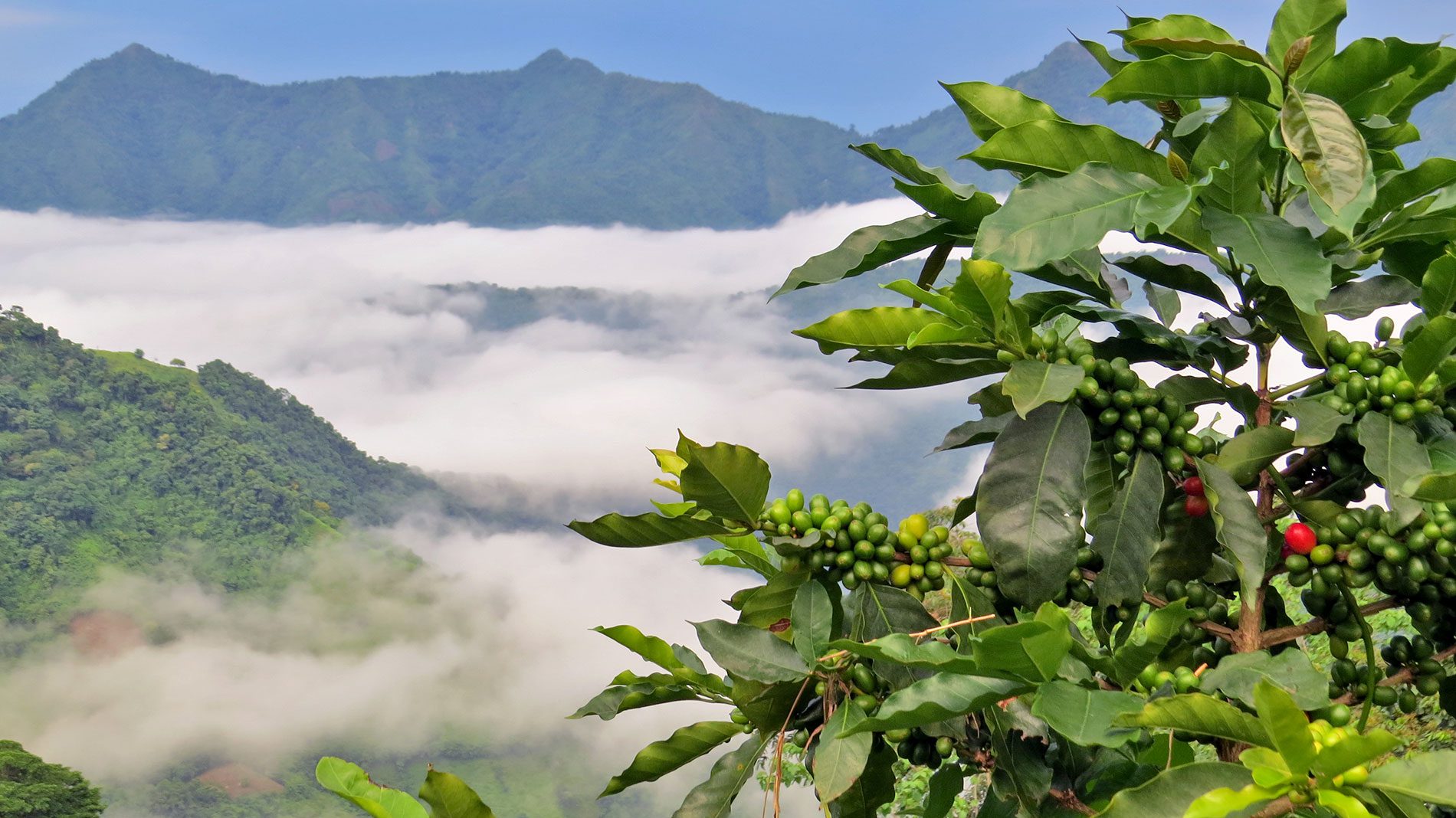
Science is key to transparency in the regenerative agriculture projects we are rolling out at coffee farms in Nicaragua, Costa Rica, and Colombia that are enrolled in the Nespresso AAA Sustainable Quality program. That’s why we’re partnering with academia, using science to provide transparency that shows our programs are making progress toward their goals. To tell the truth, as businessmen it’s intimidating to invite a bunch of PhDs onto these coffee farms to poke around and tell us what we’re doing wrong. But to do it right, regenerative agriculture requires standardized, measurable metrics.
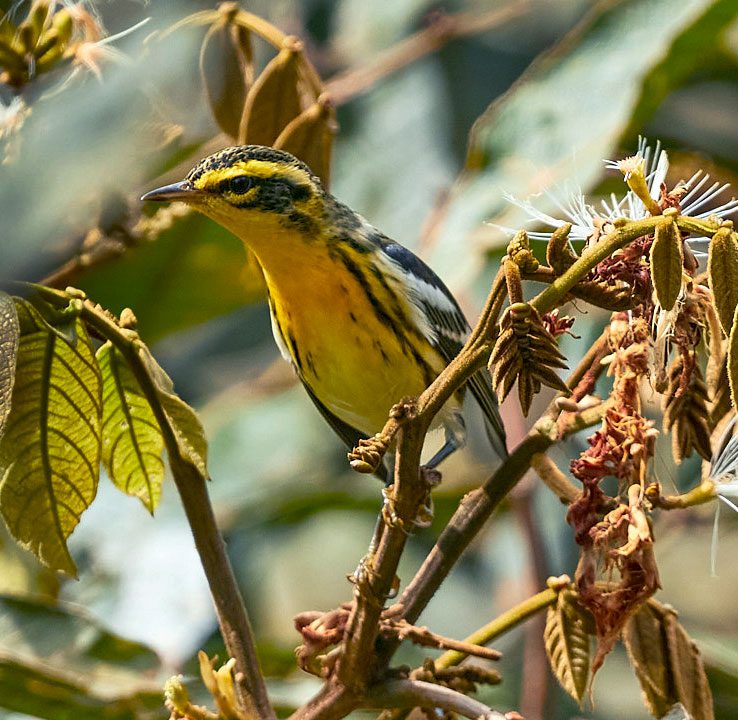
Because restoring coffee farms begins with addressing the needs of the families living on those farms, we partnered with the Instituto Centroamericano de Administracion de Empresas in Costa Rica (INCAE, one of Latin America’s top business schools) to apply the Social Progress Index. According to INCAE, it’s an index that measures “the capacity of a society to meet the basic human needs of its citizens … and create the conditions for all individuals to reach their full potential.”
Used to survey the people living on coffee farms and in the surrounding rural communities where our companies do business, the index measures existing barriers and guides our progress in improving livelihoods, which also benefits biodiversity—because when people feel safe and empowered to improve their lives, they are far less likely to engage in activities that degrade ecosystems.
Preliminary results on our Social Progress Index ratings for families living on our supplier coffee farms in Colombia indicate that they have better nutrition and medical care, better access to education (with 100% of family members completing primary and secondary schooling), lower incidences of violence against women, and better access to drinking water than other households in the region. There are areas where improvement is needed, for sure, but by measuring these indices we can see precisely where and how our companies can best contribute to improving the lives of people in coffee-growing regions.
To look at our impact on biodiversity, we are working with the Cornell Lab of Ornithology and scientists at the University of Antioquia (Colombia) and University of Costa Rica to develop a Biodiversity Progress Index that measures our progress in restoring ecosystems. Our regenerative agriculture projects have provided incentives for coffee farms to retain their existing forests and plant new trees to restore canopy cover. Of course, biodiversity is harder to survey than social progress, since forests don’t respond to survey questions. But we found one very energetic survey subject—birds.
Bird counts on our coffee farms in Costa Rica found 220 species, and in Colombia found 210 species. Preliminary scientific research on these farms indicates that many of these bird species are responding to the availability of above-ground biomass (tree cover). Included in those counts are some amazing birds, from seasonal migrants such as Yellow and Cerulean Warblers that come here from Canada and the U.S.A. to tropical species such as Long-tailed Manakins and Keel-billed Toucans. Because birds are a highly reliable indicator of environmental health, our bird counts provide a reliable tool for quantifying biodiversity. To put it simply, if the birds are doing well on our coffee farms, we know that populations of other animals are likely to be doing well, that the water is clean, and that the soil and forest are healthy.
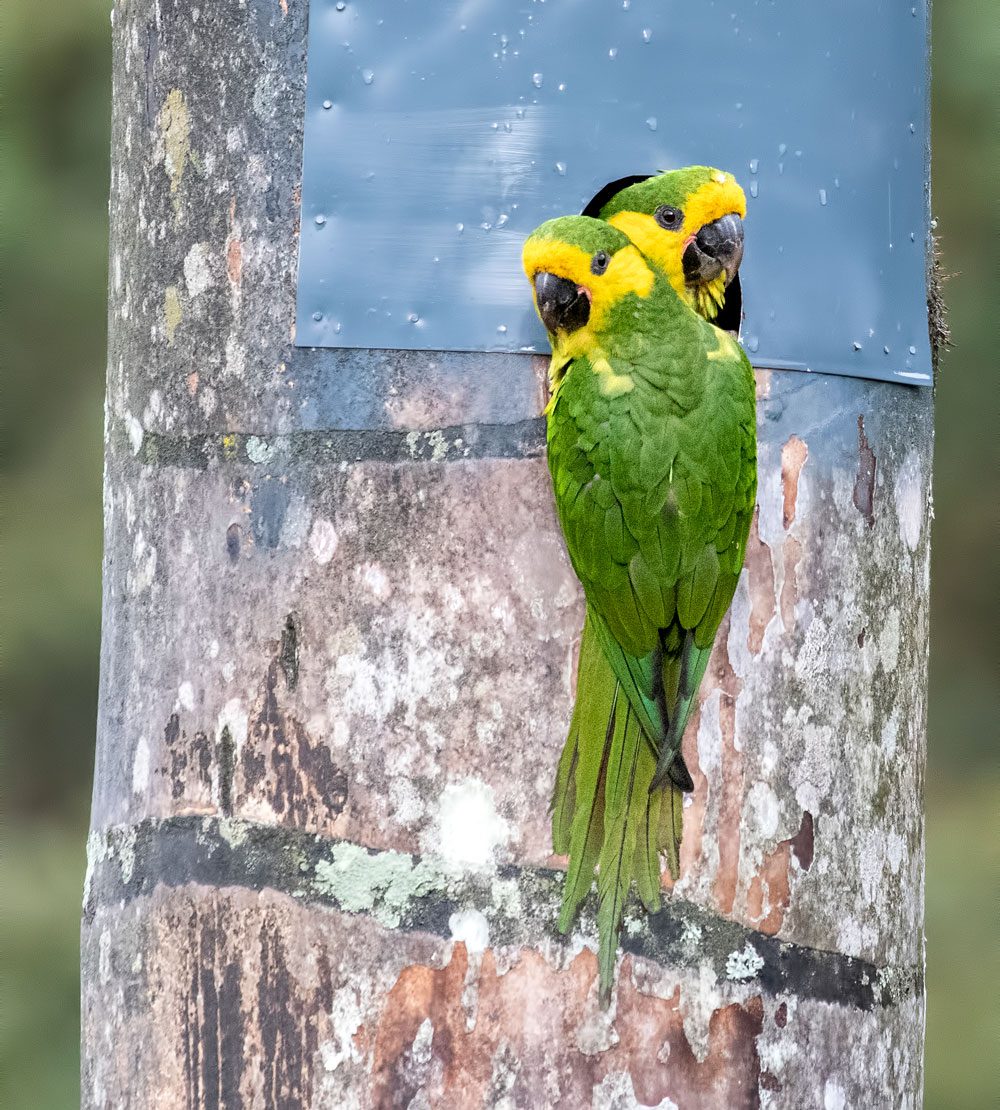
Whether it’s the higher scores for human wellness in our Social Progress Index, or the higher frequency of Baltimore Oriole sightings that inform our Biodiversity Progress Index, these hard data provide transparency and tell the entire supply chain that these farms are indeed supplying a better cup of coffee—better for people and better for the planet. And metrics are key to convincing big capital finance firms to invest in regenerative agriculture.
Sustainable investment funding is a growth sector for capital allocation. According to a recent special issue of the journal Issues in Ecology dedicated to conservation finance, sustainable investing grew 33% from 2014 to 2016 to about $9 trillion of all professionally managed assets. But it needs to grow more, because we’re in a race against climate change to save coffee as a crop and a way of life for family farms in Latin America.
Along the way, we think regenerative agriculture can help stem the global loss of biodiversity, because of stories like this: Last year at a coffee farm in our project area in Colombia, a birder conducting a survey for the Biodiversity Progress Index heard a raucous flock of parrots swooping overhead. The flock settling into the trees in a patch of forest turned out to be 15 Yellow-eared Parrots, an endangered species found only in Colombia. Our regenerative-agriculture plan for this farm includes an aggressive tree-planting initiative for wax palms—which are critical nesting habitat for Yellow-eared Parrots.
The birder who discovered the parrots on the coffee farm, José Castaño, is a local biologist who has been studying the species and championing its conservation in Colombia for the past 20 years.
“The parrot was here before the Spanish came,” says Castaño. “For me, this is the best program for [the parrot’s] future. Nespresso has the tools and the impact in international markets to promote conservation coffee focused on the parrot.
“And the Yellow-eared Parrot is an umbrella species. If the parrot is safe, we know that many other species are safe as well.”
Eric Ponçon (Cornell Agricultural Economics and Finance ’96) is the Central America regional director for the Coffee Division of Ecom Agroindustrial Corporation. Mr. Ponçon is an Aspen Leadership Institute Fellow and recipient of the Sustainable Standard Setter Award by the Rainforest Alliance. Juan Diego Román is an agronomist and green coffee project manager for Nespresso in Costa Rica. Mr. Román works with farmers and suppliers for Nespresso’s AAA Sustainable Quality Program throughout Central America.

All About Birds
is a free resource
Available for everyone,
funded by donors like you
American Kestrel by Blair Dudeck / Macaulay Library
